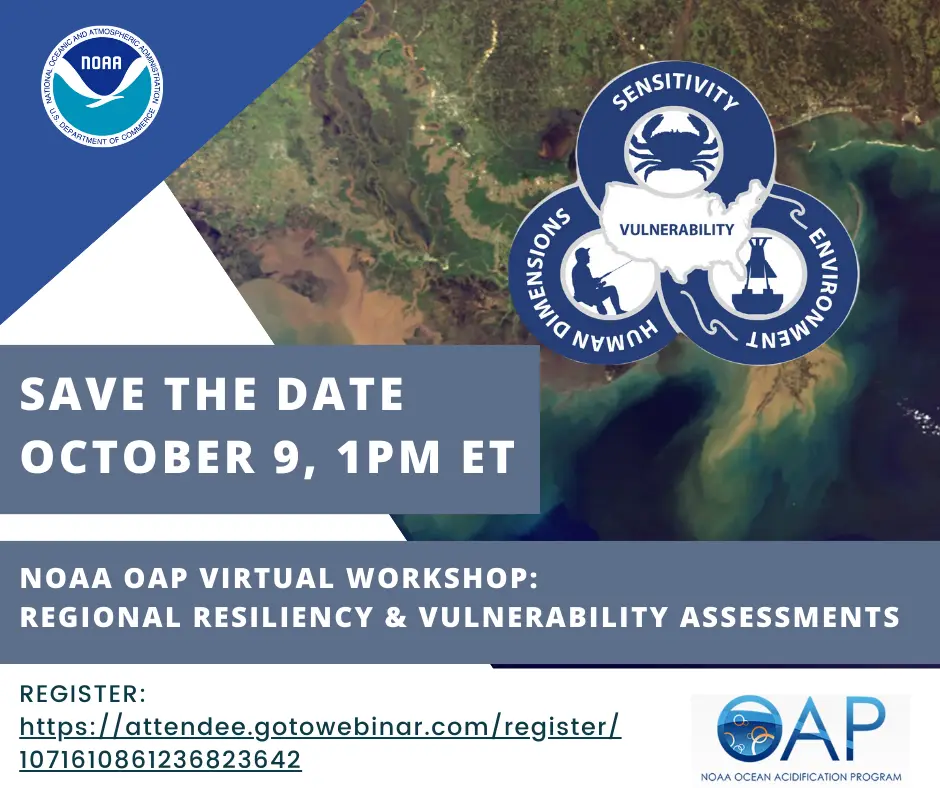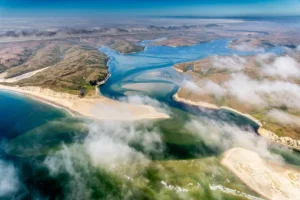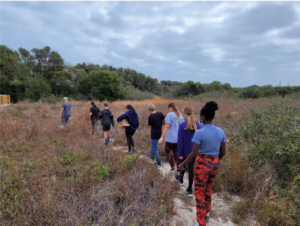Join us for a free virtual workshop on our Regional Resiliency & Vulnerability Assessment (RVA) projects on October 9, 2024 at 1pm ET. Our recently funded RVA projects will share results and facilitate connections between current project leaders and those interested in applying to our upcoming FY25 Regional Vulnerability Assessment funding call, which will likely release at the end of summer. RVA projects are interdisciplinary projects that supplement the physical, chemical, and biological science of ocean acidification with social science to assess regional vulnerability.
The goals of this workshop are:
- To hear from past RVA projects leads on lessons learned and next steps;
- To address common challenges (such as engagement with Indigenous communities, Tribes, and/or other interested groups; working in data-poor regions; and building interdisciplinary teams); and,
- To facilitate networking and collaborations between OAP-funded PIs and new interested partners.
If you have any questions about the workshop and/or the RVA funding opportunity, please contact Alexandra Puritz, OAP Human Dimensions Research Manager (alexandra.puritz@noaa.gov).






